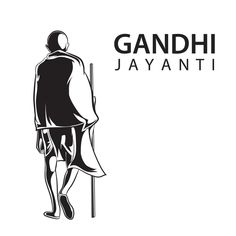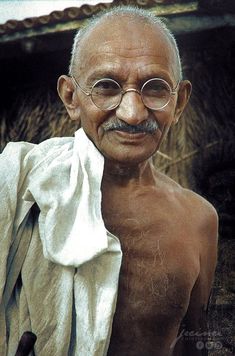“Biography”, “born”, “death”, “Father of India”,”satyagraha”, “nonviolence”, civil disobedience, “Indian independence movement”,”self-discipline”, “spiritual evolution”, “justice”, “Salt March Champaran Satyagraha”, “Non-Cooperation Movement”, “Quit India Movement”, “Dandi March”, “Hind Swaraj”, autobiography,”Gandhi’s nonviolent philosophy” wiki
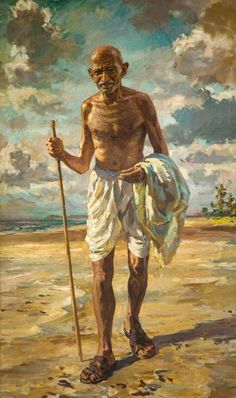
Personal Details of Mahatma Gandhi
| Detail | Value |
| Full name | Mohandas Karamchand Gandhi |
| Date of birth | October 2, 1869 |
| Place of birth | Porbandar, India |
| father name | Karamchand Gandhi |
| mother name | Putlibai Gandhi |
| Date of death | January 30, 1948 |
| Place of death | Delhi, India |
| Nationality | Indian |
| Religion | Hinduism |
| Wife | Kasturba Gandhi |
| Children | Harilal, Manilal, Ramdas, Devdas, and Maganlal |
| Occupation | Lawyer, politician, social activist, and writer |
| Known for | Philosophy and tactics of nonviolent civil disobedience |
| Nickname | Mahatma (meaning “high-souled”) |
Gandhi was married to Kasturba Gandhi from 1883 until her death in 1944. They had four sons: Harilal, Manilal, Ramdas, and Devdas. Gandhi also had a fifth son, Maganlal, who was born out of wedlock in 1899.
Gandhi was a devout Hindu, but he also respected other religions. He believed in the equality of all human beings and worked to promote religious tolerance and harmony.
Gandhi was a lawyer by profession, but he is best known for his political and social activism. He led the Indian independence movement and inspired movements for civil rights and freedom around the world.
Mahatma Gandhi’s Early Year
Mohandas Karamchand Gandhi was born on October 2, 1869, in Porbandar, a coastal town in Gujarat, India. He was the youngest of six children born to Karamchand Uttamchand Gandhi, the chief minister of Porbandar state, and Putlibai Gandhi.
Gandhi’s childhood was largely uneventful. He was a shy and timid child, but he was also intelligent and curious. He was educated at home until the age of seven, when he enrolled in a local primary school. He then attended the Alfred High School in Rajkot, where his father had been transferred.
Gandhi was an average student in school, but he excelled in religious studies. He was also a devout Hindu and followed the teachings of his mother strictly. He was a vegetarian and avoided alcohol and tobacco.
At the age of 13, Gandhi was married to Kasturba Gandhi, a girl of his own age. The marriage was arranged by their parents, as was customary at the time. Gandhi and Kasturba had four sons together: Harilal, Manilal, Ramdas, and Devdas.
In 1888, Gandhi traveled to England to study law. He returned to India in 1891 and set up a law practice in Bombay. However, he soon became involved in the Indian independence movement and gave up his law practice to devote himself full-time to activism.
Gandhi led a series of nonviolent campaigns against British rule, which eventually led to India’s independence in 1947. He is considered one of the most influential figures of the 20th century and his legacy continues to inspire people around the world.
What is Gandhi’s famous line?
“Be the change that you wish to see in the world.”
mahatma ganghi
This quote is a call to action for people to take responsibility for their own lives and to work to make the world a better place. It is a reminder that we each have the power to make a difference, no matter how small.
Gandhi’s quote has been used by people all over the world to inspire social and political change. It is a powerful reminder that we have the power to create the world we want to live in.
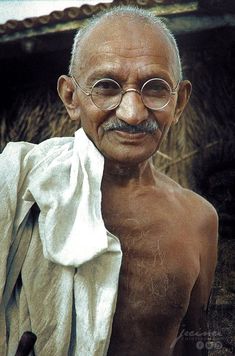
Significant Events in Mahatma Gandhi’s Life
| Year | Event |
| 1869 | Born in Porbandar, India |
| 1888 | Travels to England to study law |
| 1893 | Moves to South Africa to practice law |
| 1894 | Founded the Natal Indian Congress |
| 1906 | Lead the first satyagraha campaign in South Africa |
| 1915 | Returns to India and becomes involved in the Indian independence movement |
| 1920 | Leads the Non-Cooperation Movement against British rule |
| 1930 | Leads the Salt March |
| 1931 | Attends the Round Table Conference in London to discuss Indian independence |
| 1942 | Launches the Quit India Movement, demanding immediate British withdrawal from India |
| 1947 | India gains independence |
| 1948 | Assassinated by Nathuram Godse |
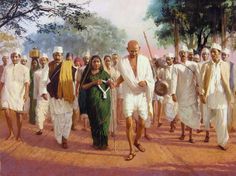
The Historic Salt March: Gandhi’s Protest
The Salt March, also known as the Dandi March or the Dandi Satyagraha, was an act of nonviolent civil disobedience in colonial India, led by Mahatma Gandhi. The twenty-four day march lasted from 12 March to 6 April 1930 as a direct action campaign of tax resistance and nonviolent protest against the British salt monopoly.
The British government had imposed a salt tax on Indians, which made it very expensive for them to buy salt. Salt was a staple food item in India, and the tax was a heavy burden on the poor. Gandhi believed that the salt tax was unjust and that it should be abolished.
On March 12, 1930, Gandhi set out from Sabarmati Ashram in Gujarat with a group of 78 followers on a 240-mile march to the coastal town of Dandi. Along the way, Gandhi and his followers held meetings and rallies to raise awareness of the salt tax and to encourage people to join the march.
On April 6, 1930, Gandhi and his followers reached Dandi. Gandhi walked into the sea and picked up a piece of salt, thus breaking the salt law. This act of defiance inspired millions of Indians to join the Salt March and to boycott British salt.
The Salt March was a turning point in the Indian independence movement. It showed the world that Indians were determined to achieve their freedom and that they were willing to use nonviolent methods to do so. The Salt March also inspired other movements for civil rights and freedom around the world.
The Salt March was a historic event that helped to bring about India’s independence in 1947. It is a reminder of the power of nonviolent civil disobedience and the importance of fighting for justice and equality.
Gandhi’s Personal Life: Marriage and Family
| Name | Relationship to Gandhi |
| Kasturba Gandhi | Wife |
| Harilal Gandhi | son |
| Manilal Gandhi | son |
| Ramdas Gandhi | son |
| Devdas Gandhi | son |
| Maganlal Gandhi | son |
What happened to Gandhi’s first wife?
Gandhi’s first wife, Kasturba Gandhi, died on February 22, 1944, at the Aga Khan Palace in Pune, India, at the age of 74. She had been imprisoned with Gandhi and other Indian independence leaders in the palace since 1942.
Kasturba had been in poor health for many years, suffering from chronic bronchitis and other ailments. Her health deteriorated further during her imprisonment, and she died of pneumonia and heart failure.
Gandhi was deeply saddened by his wife’s death. He wrote in his autobiography, “The Story of My Experiments with Truth,” that Kasturba had been his “constant companion, a helpmate in the truest sense.”
Kasturba Gandhi was a remarkable woman in her own right. She was a dedicated follower of Gandhi’s nonviolent principles, and she played an important role in the Indian independence movement. She was also a devoted wife and mother.
How many times was Mahatma Gandhi married?
Mahatma Gandhi was married only once. His wife’s name was Kasturba Gandhi. They were married in 1883, when they were both 13 years old. Kasturba Gandhi was an important partner in Mahatma Gandhi’s political life. She actively participated in Mahatma Gandhi’s non-cooperation movement and other movements. Kasturba Gandhi died in 1944.
Therefore, Mahatma Gandhi was married only once.
India’s Independence: Gandhi’s Leadership
Mahatma Gandhi was the leader of Indian nationalism in British-ruled India. Employing nonviolent civil disobedience, mahatma Gandhi led India to independence and inspired movements for civil rights and freedom across the world.
Gandhi returned to India in 1915 and quickly became the leader of the Indian independence movement. He led a series of nonviolent campaigns against British rule, including the Non-Cooperation Movement of 1920-22, the Salt March of 1930, and the Quit India Movement of 1942.
Gandhi’s campaigns were based on the principle of nonviolent civil disobedience, which he called satyagraha. Satyagraha holds that nonviolence is the only way to achieve meaningful social change.
Gandhi’s campaigns inspired millions of Indians and helped to bring about India’s independence in 1947. He is considered the Father of India and is revered as one of the greatest leaders of the 20th century.
Gandhi’s leadership was a shining example of what can be achieved through nonviolent civil disobedience. He showed the world that it is possible to bring about meaningful social change without resorting to violence. His legacy continues to inspire people around the world to fight for justice and equality.
Why Gandhi is known as Father of Nation?
Mahatma Gandhi is known as the Father of the Nation because he is the most widely credited leader of the Indian independence movement. He led the Indian people in a non-violent struggle against British rule, which eventually resulted in India’s independence in 1947.
Gandhi was a visionary leader who developed a unique philosophy of non-violent resistance, which he called Satyagraha. Satyagraha is based on the principles of truth, non-violence, and civil disobedience. Gandhi used Satyagraha to lead the Indian people in a series of mass protests and civil disobedience movements against the British.
Gandhi’s non-violent methods were highly successful in galvanizing the Indian people and putting pressure on the British government. He was also able to win the support of many people around the world, who were inspired by his courage and commitment to peace.
The reasons why Gandhi is known as the Father of the Nation:
- He was the most prominent leader of the Indian independence movement.
- He led the Indian people in a non-violent struggle against British rule.
- He developed a unique philosophy of non-violent resistance, called Satyagraha, which was highly successful in galvanizing the Indian people and putting pressure on the British government.
- He was able to win the support of many people around the world, who were inspired by his courage and commitment to peace.
- He was also a social reformer who worked for the upliftment of the poor and the marginalized.
Gandhi is a revered figure in India, and his birthday is celebrated as a national holiday.
Gandhi’s Impact on World
Mahatma Gandhi’s impact on the world has been profound. His philosophy and tactics of nonviolent civil disobedience have inspired movements for civil rights and freedom around the globe.
Gandhi’s impact can be seen in the following ways:
- He inspired the Indian independence movement, which led to India’s independence from British rule in 1947.
- He inspired the American civil rights movement, led by Martin Luther King Jr., which fought for racial equality in the United States.
- He inspired the anti-apartheid movement in South Africa, which fought against apartheid, a system of racial segregation and discrimination.
- He inspired the Solidarity movement in Poland, which fought against communist rule.
- He continues to inspire people around the world to fight for justice and equality, such as in the Arab Spring and the Black Lives Matter movement.
Gandhi’s impact is not limited to social and political movements. He also had a significant impact on thought and culture. His ideas about nonviolence and social justice have influenced people from all walks of life, including religious leaders, artists, and writers.
Gandhi’s legacy is one of hope and inspiration. He showed the world that it is possible to achieve meaningful social change through nonviolent means. His example continues to guide people in their struggles for justice and equality today.
some specific examples of Gandhi’s impact on the world:
- Martin Luther King Jr. credited Gandhi as one of his biggest influences. King said that Gandhi’s teachings “gave me a method.”
- Nelson Mandela, who led the anti-apartheid movement in South Africa, was also inspired by Gandhi. Mandela said that Gandhi was “the greatest inspiration to my life and work.”
- Aung San Suu Kyi, who led the democracy movement in Myanmar, was also influenced by Gandhi. Suu Kyi said that Gandhi’s teachings “showed me that it was possible to fight for what is right without resorting to violence.”
Gandhi’s impact on the world is still felt today. His teachings continue to inspire people in their struggles for justice and equality.
Gandhi’s impact on India
Gandhi’s impact on India is immense. He is revered as the Father of the Nation for his role in leading the Indian independence movement. He also had a profound impact on Indian society, culture, and politics.
Gandhi’s non-violent methods inspired people all over the world, and his legacy continues to be relevant today. He showed that it is possible to achieve social and political change without violence, and his teachings have been used by people all over the world to fight for their rights and freedoms.
some of the specific ways in which Gandhi impacted India:
- He led the Indian people in a non-violent struggle against British rule, which eventually resulted in India’s independence in 1947.
- He fought against untouchability and other social ills.
- He advocated for simple living and self-reliance.
- He promoted Hindu-Muslim unity.
- He inspired the Indian people to take responsibility for their own lives and to work to make the world a better place.
Gandhi’s impact on India can be seen in many different ways today. His teachings are still taught in schools and universities, and his quotes are often used by politicians and activists.
What is swaraj?
“Swaraj” is a Hindi term that generally means self-governance or self-rule. It was first used by “Chhatrapati Shivaji Maharaj” to attain self-rule from the Mughal Empire and the Adil Shahi and Nizam Shahi Sultanates. Later, the term was used synonymously with “home-rule” by “Maharishi Dayanand Saraswati” and later on by “Mahatma Gandhi”. However, the word usually refers to Gandhi’s concept of Indian independence from foreign domination.
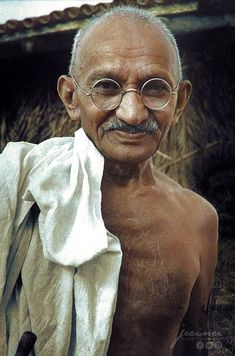
Gandhi’s concept of Swaraj advocated India’s discarding British political, economic, bureaucratic, legal, military, and educational institutions. It laid stress on governance not by a hierarchical government but by self-governance through individuals and community building. The focus was on political decentralization. Although Gandhi’s aim of totally implementing the concepts of Swaraj in India was not achieved, the voluntary work organizations which he founded for this purpose did serve as precursors and role models for people’s movements, voluntary organizations, and some of the non-governmental organizations that were subsequently launched in various parts of India.
The term ‘Swaraj’ literally means ‘self-rule,’ ‘self-government,’ ‘self-determination,’ or ‘independence.’ This term became popular during India’s struggle for independence from the British Colonial Rule. Gandhi’s concept of Swaraj is defined as a ‘model code of conduct which points men on the path of their duty, path of control over desires, and the path of ‘mastery over their minds and passions. Swaraj implies the elevation of a personal moral being to limit indulgences and sees happiness as largely a mental construct.
What is the difference between Swaraj and Satyagraha?
Swaraj and Satyagraha are two concepts that were integral to Mahatma Gandhi’s philosophy of nonviolent resistance and Indian independence movement.
Swaraj is a Hindi term that generally means self-governance or self-rule. It was first used by Chhatrapati Shivaji Maharaj to attain self-rule from the Mughal Empire and the Adil Shahi and Nizam Shahi Sultanates. Later, the term was used synonymously with “home-rule” by Maharishi Dayanand Saraswati and later on by Mahatma Gandhi. However, the word usually refers to Gandhi’s concept of Indian independence from foreign domination.
Gandhi’s concept of Swaraj advocated India’s discarding British political, economic, bureaucratic, legal, military, and educational institutions. It laid stress on governance not by a hierarchical government but by self-governance through individuals and community building. The focus was on political decentralization. Although Gandhi’s aim of totally implementing the concepts of Swaraj in India was not achieved, the voluntary work organizations which he founded for this purpose did serve as precursors and role models for people’s movements, voluntary organizations, and some of the non-governmental organizations that were subsequently launched in various parts of India.
On the other hand, Satyagraha is a Sanskrit term that means “holding onto truth” or “soul force”. It is a method of nonviolent resistance that Gandhi developed as a means to fight against British colonialism in India. Satyagraha is based on the idea that truth is more powerful than violence. It involves passive resistance to injustice through non-cooperation with unjust laws and authorities. Satyagraha was not just a political tool for Gandhi but also a way of life. He believed that it could be used to resolve conflicts in personal relationships as well as in society at large.
While Swaraj emphasizes self-rule and decentralization of power, Satyagraha emphasizes nonviolent resistance to injustice. The two concepts are closely related because they both emphasize individual responsibility and action as opposed to relying on external authorities
What are some examples of Satyagraha?
Some of the major techniques of Satyagraha are:
- Non-cooperation: This involves the refusal to cooperate with unjust laws and authorities. It includes boycotts, strikes, and civil disobedience.
- Civil disobedience: This involves the deliberate violation of laws that are considered unjust. Civil disobedience is a form of nonviolent resistance that involves breaking the law in order to draw attention to an injustice.
- Hijrat: This involves the voluntary migration of people from one place to another in order to escape oppression or persecution.
- Fasting: This involves going without food for a period of time as a means of protest or self-purification.
- Strike: This involves workers refusing to work as a means of protest against unfair labor practices or poor working conditions.
These techniques were used by Gandhi during India’s struggle for independence from British rule and have since been adopted by many other social justice movements around the world.
Mahatma Gandhi’s Birthday: A Tribute
Mahatma Gandhi’s birth anniversary, celebrated on October 2nd, is a day to honor and remember one of the most influential figures of the 20th century. Gandhi was a pioneer of nonviolent civil disobedience, and his teachings and methods have inspired movements for social justice and freedom around the world.
Gandhi was born in Porbandar, India, in 1869. He studied law in England and then returned to India to practice law. However, he soon became involved in the Indian independence movement. In 1893, Gandhi traveled to South Africa to represent an Indian Muslim merchant in a lawsuit. There, he experienced firsthand the racism and discrimination that Indians faced. This experience led him to develop his philosophy of nonviolent civil disobedience, which he called satyagraha.
Mahatma Gandhi death date and place
Mahatma Gandhi was assassinated on January 30, 1948, at Birla House in New Delhi, India. He was 78 years old.
Gandhi was shot three times in the chest by Nathuram Godse, a Hindu nationalist who opposed Gandhi’s non-violent methods and his advocacy for Hindu-Muslim unity. Godse was later convicted and executed for his crime.
Gandhi’s death was a major shock to India and the world. He was mourned by millions of people as a champion of peace and justice. His legacy continues to inspire people around the globe.
Gandhi’s Wisdom: Quotes on Peace
Mahatma Gandhi’s wisdom on peace is timeless and universal. He believed that peace is not just the absence of war, but the presence of justice, of law, of order, of opportunity, and of equality. He also believed that nonviolence is the only way to achieve true peace.
some of Gandhi’s most inspiring quotes on peace:
- “An eye for an eye only ends up making the whole world blind.”
- “Nonviolence is the greatest force at the disposal of mankind. It is mightier than the mightiest weapon of destruction devised by the ingenuity of man.”
- “Happiness is when what you think, what you say, and what you do are in harmony.”
- “If you want real peace in the world, start with children.”
- “Be the change that you wish to see in the world.”
- “Hate cannot drive out hate; only love can do that.”
- “The weak can never forgive. Forgiveness is the attribute of the strong.”
- “You must not lose faith in humanity. Humanity is like an ocean; if a few drops of the ocean are dirty, the ocean does not become dirty.”
- “The day the power of love overrules the love of power, the world will know peace.”
- “Nonviolence is not a garment to be put on and off at will. Its seat is in the heart, and it must be an inseparable part of our being.”
Gandhi’s wisdom on peace is a reminder that we all have a role to play in creating a more peaceful world. We can start by living our own lives in accordance with Gandhi’s values of love, nonviolence, and compassion. We can also work to promote peace and justice in our communities and around the world.
Spiritual Evolution: Gandhi’s Inner Journey
Mahatma Gandhi’s spiritual evolution was a lifelong journey. He was born into a Hindu family, but he was also influenced by other religions, including Jainism, Christianity, and Islam. He was a devout seeker of truth, and he experimented with different spiritual practices in his search for enlightenment.
One of the key turning points in Gandhi’s spiritual evolution was his experience in South Africa.
Gandhi believed that satyagraha was not just a political strategy, but also a spiritual path. He believed that by practicing nonviolence, we can not only achieve social justice, but also transform ourselves and the world around us.
Another key element of Gandhi’s spiritual evolution was his emphasis on self-discipline. He believed that we must master our own minds and bodies in order to achieve true spiritual freedom. He practiced a number of spiritual disciplines, including fasting, prayer, and meditation.
Gandhi’s spiritual evolution was not without its challenges. He faced doubts and setbacks along the way. However, he never gave up on his quest for truth and enlightenment.
The key aspects of Gandhi’s spiritual evolution:
- A deep commitment to nonviolence: Gandhi believed that nonviolence is the only way to achieve true peace and justice. He also believed that nonviolence is a spiritual path that can lead to self-transformation.
- A commitment to self-discipline: Gandhi believed that we must master our own minds and bodies in order to achieve true spiritual freedom. He practiced a number of spiritual disciplines, including fasting, prayer, and meditation.
- A commitment to service: Gandhi believed that the best way to serve God is to serve others. He dedicated his life to fighting for the rights of the poor and oppressed.
- A commitment to truth: Gandhi believed that truth is the ultimate reality and that we should strive to live our lives in accordance with the truth. He was always honest with himself and others, even when it was difficult.
Gandhi’s spiritual evolution is an inspiration to us all.
Nathuram Godse: Biography, Career, and Ideology
